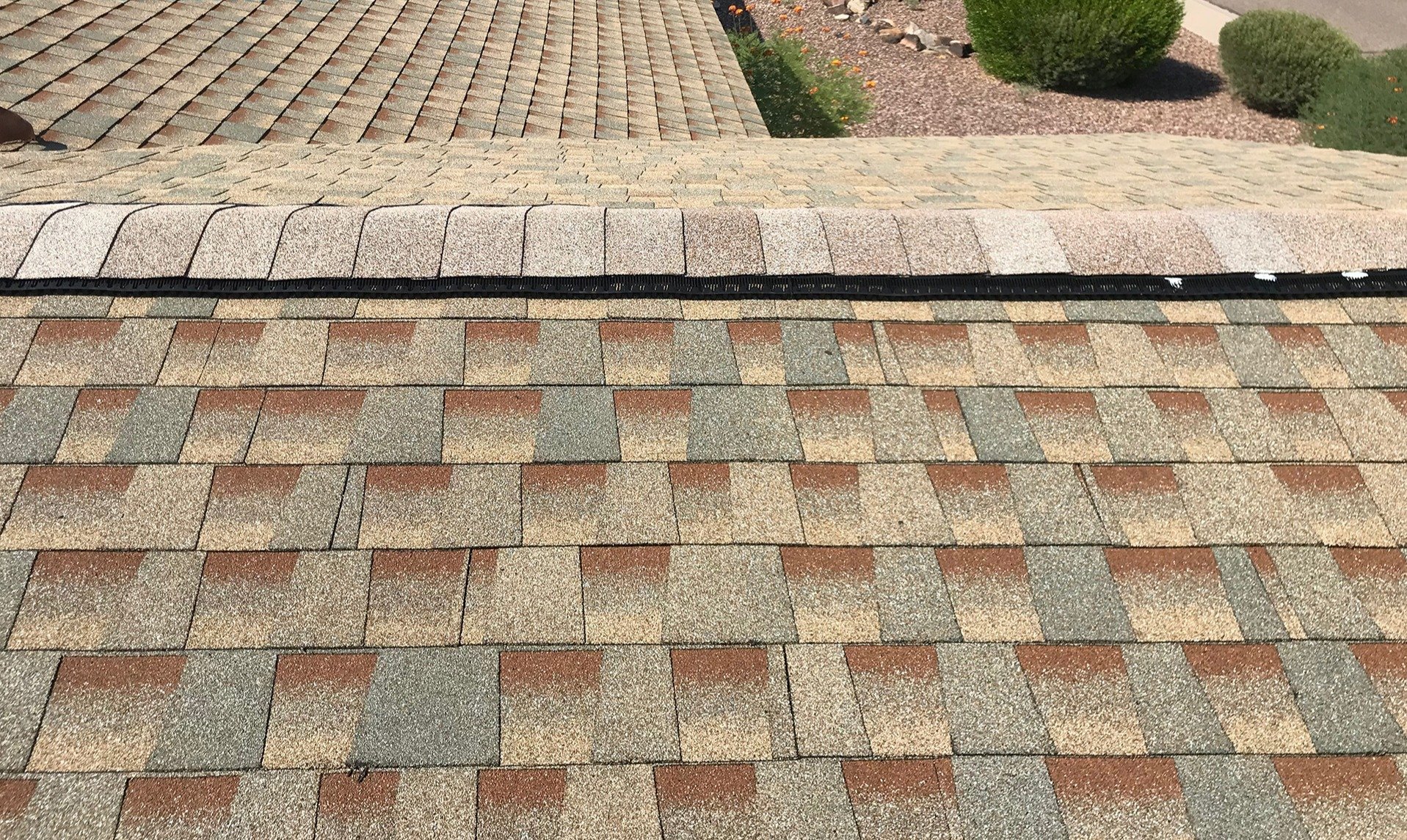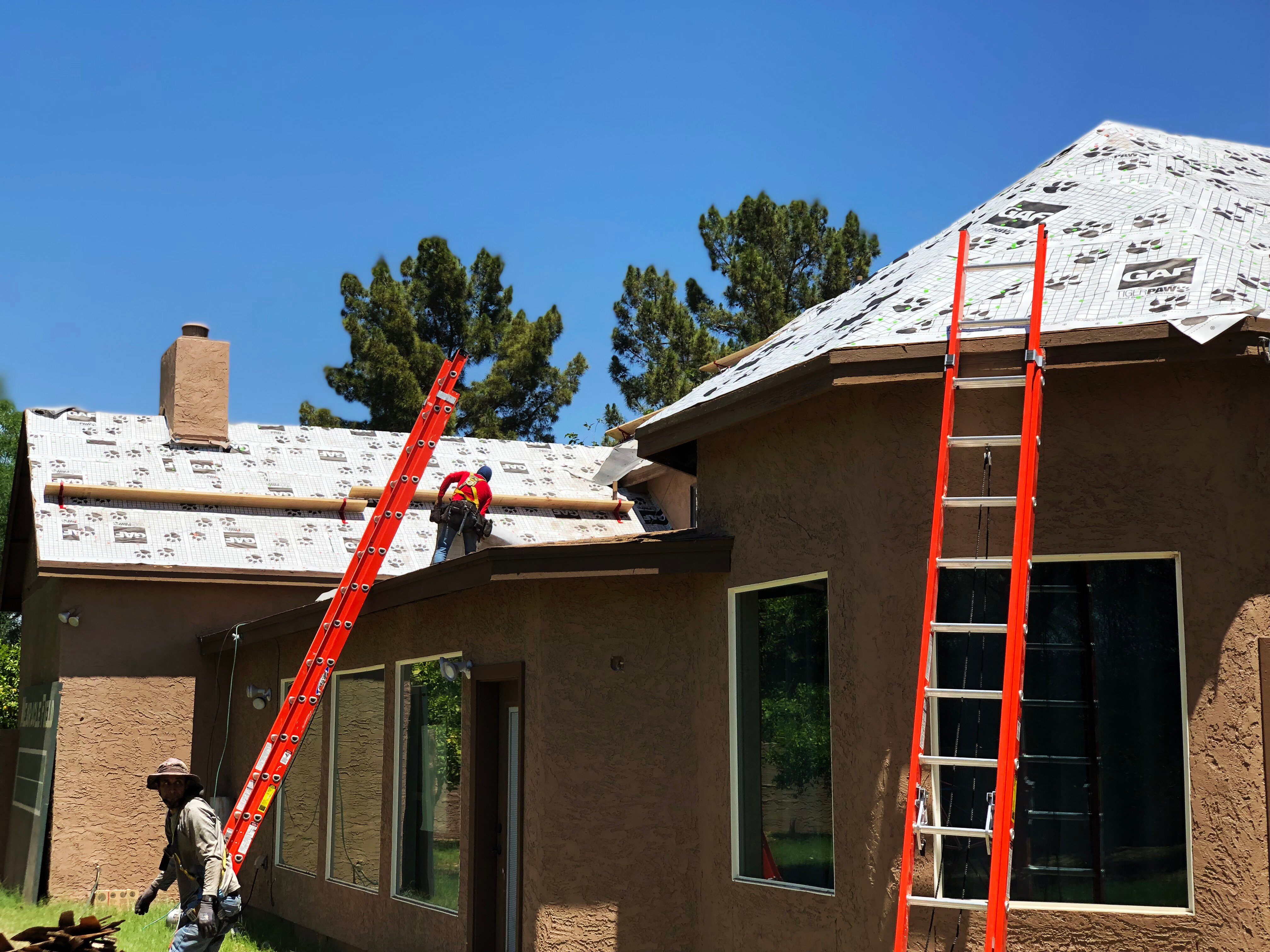Roof Underlayment 101: What It Is & Why It’s Important
Home / Azul Blog / Roof Underlayment 101: What It Is & Why It’s Important When most homeowners think about their roof, they picture the tiles, shingles, or foam that cover the top...

Home / Azul Blog / Does Shingle Color Matter Beyond Aesthetics?
When it comes to roofing, most homeowners prioritize aesthetics, durability, and cost. Shingle color often falls into the aesthetics category, but its significance goes well beyond mere appearance. This is especially true here in Arizona, where the interaction of our abundant sunshine on your rooftop can have a direct impact on your monthly electric bill. As such, understanding the role that shingle color plays beyond aesthetics can help you make more informed decisions when a new roof is on the shopping list.
This one definitely deserves the top spot. One of the most impactful ways shingle color affects your home is its influence on energy efficiency. Lighter-colored shingles, such as white, beige, or light gray, reflect more sunlight than darker shades. This reflection can help keep your home cooler, potentially reducing your air conditioning costs during hot months. Conversely, darker shingles absorb more heat, which ultimately makes its way into your living areas. This extra accumulated means your AC has to work way harder to cool your home, which means higher electricity bills during those hot summer months.
The temperature fluctuations caused by different shingle colors can also affect the roof’s overall longevity. Darker shingles tend to get hotter, which might accelerate the aging process of the shingles themselves, as well as the critical underlayment. Roofing underlayment, sometimes referred to as "shingle underlay," is a protective layer installed between your roof deck and shingles. This critical waterproof material acts as a barrier against leaks, mold, and water damage. Read more about different underlayment materials here.
Darker, hotter shingles will transfer more heat into the underlayment. This can lead to quicker deterioration and may necessitate earlier replacement. On the other hand, lighter shingles, by reflecting more sunlight, generally stay cooler and can contribute to a longer lifespan for your roofing materials, including the underlayment.
As we mentioned above, the color of your shingles can also influence the temperature in your attic. Darker shingles cause your attic to become hotter, which can lead to increased thermal load on your home's insulation and HVAC system. Think about it this way: if the metal heating ducts running through your attic are already above 130 degrees, a common occurrence during Arizona summers, your AC is fighting the ducting temperature before it even takes on your living area. This added heat can result in discomfort and increased energy costs. Lighter-colored shingles help mitigate this effect, promoting a more stable attic temperature, better overall insulation performance, and, most importantly, less stress on your AC system.
The concentration of heat-absorbing materials in urban areas can contribute to the urban heat island (UHI) effect, where cities experience higher temperatures than surrounding rural areas. Choosing lighter-colored shingles can help counteract this effect by reflecting more sunlight and reducing the heat buildings absorb. This can be beneficial not only for individual homes but also for the broader community by contributing to cooler urban environments.
Shingle color can also impact sustainability. Some modern roofing materials have reflective coatings that enhance home energy efficiency. These materials often come in various colors, allowing you to choose an option that balances aesthetic appeal with environmental benefits.
At Azul Roofing Solutions, sustainability is one of our guiding principles. We offer both traditional roofing products as well as "green" options that help reduce environmental impact. If being more “green” with your roof is important to you, we’re happy to provide a custom quote with sustainability in mind.

When selecting a shingle color, it's important to consider your climate, energy efficiency goals, and aesthetic preferences. Here are a few tips for making an informed choice:
Shingle color is not just about curb appeal—it has tangible effects on energy efficiency, roof longevity, and environmental impact. By understanding these factors, you can make a more informed decision that not only enhances the look of your home but also contributes to its performance and sustainability. Next time you choose shingles, remember that color matters more than you think.

Home / Azul Blog / Roof Underlayment 101: What It Is & Why It’s Important When most homeowners think about their roof, they picture the tiles, shingles, or foam that cover the top...